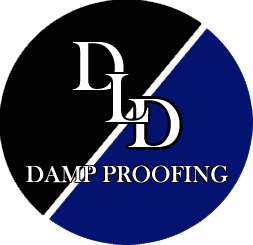skimming
skimming
Skimming offers a smooth and professional finish to all types of walls. Here at DLD Damp Proofing we have been providing clients with a first class skimming service for over 20 years now, and pride ourselves on the quality of our work.
Freshen Up Your Walls With Our Skimming Services
Skimming can offer a new life to old walls which may have chips or dints in the existing plaster, or has become discoloured due to its age. We provide a traditional skimming service, which provides a finish that can be wall papered or painted to your specific tastes.
Don’t Delay – Contact Us for More Information About Skimming
Skimming to plasterboard is often the most popular method of providing a smooth, seamless surface ready to receive decorative treatment. Regardless of whether you require skimming or plastering we can help!
As a family run business we ensure to provide our clients with a high quality service each and every time.
What is skimming?
Are your walls in need of some TLC? We understand that cracks and uneven surfaces are difficult to cover up with a lick of paint so skimming may be a fantastic choice for you. Wondering what skimming is? Well, Skimming is a subset of plastering where a wall is plastered with a layer of thin
coat. Often, skimming is applied to an existing plaster to smooth the surface. Applying a white layer of lime to rough cement is called a skim coat which can then be painted to enhance the visual appeal of the wall. With skimming, it’s time to wave goodbye to lumps and bumps on walls and welcome
smooth, even surfaces that make your walls much easier to decorate.

What are the differences between plastering and skimming?
Whilst plastering also aims to decorate buildings and increase the durability of a wall, skimming is performed to upgrade an old building whereas plastering is performed on new buildings. Also, skimmed surfaces are smooth whereas plastered surfaces tend to be rough.
How does skimming work?
Skimming is a very time-sensitive process as you will need to work quickly once skimming is underway.
1. PREPARE THE ROOM
First, remove or cover anything in the room you don’t want to suffer from potential dirt and splatter arising from skimming, as well as removing cover plates from your light switches and plug sockets.
Before skimming begins, your walls should be clean from dust and any cracks should be sealed. Next, a water-based primer will be used to finish preparing your walls, sealing any loose wallpaper. Every surface intending to be plastered will be painted with a roller.
2. APPLYING THE FIRST SKIM COAT
After the walls have dried, the joint compound will be mixed, forming a muddy consistency which will be applied to the skimmer plate. Starting in one corner of the wall, the trowel will be dragged vertically over the wall, applying a firm, even pressure. Each new scoop will slightly overlap the last, ensuring there are no gaps so there is an even finish.
3. APPLYING THE FINISHING COATS
At least two coats will be applied for a smooth finish, smoothing over trowel marks to ensure a completely even surface.
4. SAND AWAY IMPERFECTIONS
Before picking up sandpaper, the walls need to be completely dry, which will probably take 24 hours.
Once dry, any rough edges, bumps or grooves will be smoothed using fine-grit sandpaper for a
completely flat surface.
5. CLEAN UP
Once finished, the room will be cleaned to remove any excess plaster dust as excess dust will make the surface less adhesive to wallpaper paste or paint. This will leave your walls ready to be decorated.
For more information about skimming or to get a free no obligation quote, please feel free to get in touch with our friendly team of experts who will be more than happy to help you with your query.
Skimming: Achieving Smooth and Flawless Walls and Ceilings
Skimming is a highly effective plastering technique used to create smooth, even surfaces on walls and ceilings. Commonly used in both new builds and renovation projects across the UK, skimming is an essential step in preparing surfaces for painting or wallpapering. Whether you’re refreshing a single room or undertaking a full property refurbishment, skimming provides a clean, professional finish that transforms tired or uneven surfaces.
What Is Skimming?
Skimming involves applying a thin layer of finishing plaster, usually around 2–3mm thick, over existing plaster, plasterboard, or previously rendered walls. The aim is to achieve a perfectly smooth and level surface, ready for final decoration. It’s often carried out after repairs, electrical work, or re-plastering to eliminate cracks, holes, or other imperfections.
Skimming is sometimes referred to as re-skimming when it’s applied over old plaster or previously finished walls in need of renewal.
When Is Skimming Required?
There are several scenarios where skimming is the ideal solution:
- Covering old or damaged plaster
- Smoothing uneven or bumpy surfaces
- Finishing newly installed plasterboard
- Preparing walls after wallpaper removal
- Following building work or rewiring
By applying a fresh skim coat, you ensure that the final decoration looks clean, consistent, and professional.
Benefits of Skimming
Smooth Finish
Skimming creates an ultra-smooth surface that is perfect for painting or wallpapering. It eliminates imperfections, making walls look brand new.
Improved Aesthetics
Freshly skimmed walls can dramatically improve the appearance of a room, giving it a crisp and modern look.
Prepares for Decoration
- Skimmed surfaces are ideal for decorating, helping paint adhere better and reducing the risk of flaking or peeling.
- Increases Property Value
- Homes with smooth, flawless walls and ceilings are more attractive to potential buyers and can command a higher resale value.
- Cost-Effective Refurbishment
Skimming is often more affordable than removing and replacing all existing plaster, making it a popular choice in renovations.
Can You Skim Over Painted Walls?
Yes, but proper preparation is crucial. The surface must be clean, stable, and free of peeling paint. A bonding agent or primer such as PVA is typically applied first to help the plaster adhere to the wall. A professional plasterer will assess the condition and determine the best approach.
How Long Does Skimming Take?
For a single room, skimming usually takes 1–2 days depending on size and complexity. After skimming, plaster typically takes around 5–7 days to dry fully, though this can vary with temperature and ventilation. Once completely dry, it can be painted or wallpapered.
Hiring a Professional Plasterer
Skimming requires skill, experience, and the right tools. A qualified plasterer will ensure a smooth, durable finish and avoid common issues like cracking, blistering, or uneven surfaces. Always check reviews and ask for examples of previous work when choosing a tradesperson.
Skimming is one of the most effective ways to refresh your walls and ceilings, leaving a smooth, professional surface ready for decorating. Whether you’re renovating a single room or an entire property, skimming delivers excellent results that stand the test of time. For the best finish, trust a skilled plasterer to carry out the work to the highest standard.
Our Accreditations



© Copyright 2024 - DLD Damp proofing Ltd
